 Harkesh Arora, MD, a hospitalist at Lovelace Medical Group in Albuquerque, N.M., said she has grown sad and frustrated by her long—and, so far, futile—effort to obtain an EB-1A, an employment-based visa for those demonstrating extraordinary ability in their field.
Harkesh Arora, MD, a hospitalist at Lovelace Medical Group in Albuquerque, N.M., said she has grown sad and frustrated by her long—and, so far, futile—effort to obtain an EB-1A, an employment-based visa for those demonstrating extraordinary ability in their field.
Out of the 140,000 employment-based visa petitions allotted each year, 7% is the maximum any country can get. Because of that, applicants from India must wait even longer due to the staggering number of applications received each year by U.S. Citizenship and Immigration Services.
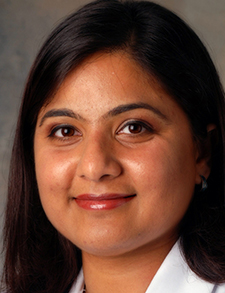
Dr. Arora
Dr. Arora and others recounted their struggles in a session at SHM Converge earlier this year, in which U.S. hospitalists from other countries talked about their experiences, and representatives from SHM discussed efforts to make federal policy changes that would benefit both immigrant hospitalists and the patients for whom they care.
On top of the waitlist, Dr. Arora said, although U.S. Citizenship and Immigration Services has digitized its application process to speed up the process, it also significantly increased the length of its forms, which counterintuitively made the review process more complex and tedious. Dr. Arora has worked in the U.S. on a work visa for 18 years and has lived in limbo with her family since 2005.
“I am tired and feel disheartened and helpless,” Dr. Arora said. “We need letters; we need letters of support.” For her EB-1A application to carry more weight and to be taken more seriously, she explained, she desperately needs letters of support from physicians outside the Indian diaspora.
She said she wished she were from some other country.
“My country doesn’t want me back because they think I belong here since it’s been so long, and this country hasn’t accepted me as its own,” she said. “I feel literally abandoned and worry for my family with each breath. I’m just coming to the end of my rope.” After her remarks and the session ended, attendees approached her to offer support.
Many immigrant physicians currently live and work in the U.S. on temporary visas (J-1, H1-B) while waiting for a permanent visa to become available. Some remain in temporary status for many years, if not decades, because of the caps applied to their country of nationality.
Session presenters shared some statistics. A 2021 report by the Association of American Medical Colleges, shows the U.S. will likely see a shortage of between 37,800 and 124,000 physicians by 2034, including shortfalls in both primary and specialty care.1 In 2021, approximately one in five active U.S. physicians were born and attended medical school outside the U.S. or Canada, totaling more than 203,500 physicians.2
During the COVID-19 pandemic, 16.4% of health care workers were immigrants.3
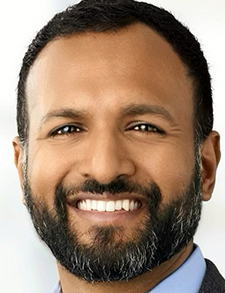
Dr. Mathews
“They served a lot, but immigrant hospitalists—many of them had ineligibility for Medicaid or social security benefits,” said Benji Mathews, MD, MBA, SFHM, senior medical director, hospital specialty services, HealthPartners in St. Paul, Minn. Needing to work to remain in the U.S., there was a risk of deportation if an immigrant physician fell ill, he said. “That was a fear that many of our immigrant hospitalists lived through.”
Dr. Mathews recalled his move from the Middle East to Minnesota around his teenage years, and the challenges he experienced because English wasn’t his first language. He remembers constantly feeling like “the other” and has regularly experienced the common phenomenon of “perpetual foreigner syndrome.”
Patients, he said, often ask “Where are you from?” which is often a harmless question, but one that is deeply personal and intimate. Some patients, he said, enjoy sharing about their sense of belonging, while others often quietly question it.
Dr. Mathews said he hopes to continue to serve and lead with SHM to provide spaces for immigrant hospitalists to share their stories and engage in advocacy.
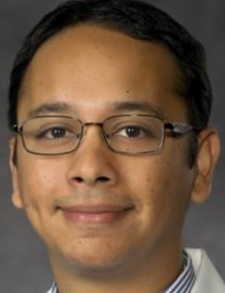
Dr. Malik
Manpreet Malik, MD, SFHM, associate professor at Emory University School of Medicine in Atlanta, and a native of northern India said that in 2013 when he acquired an employment-based visa and applied for a green card, the U.S. was processing green card applications it had received in 2008. By 2019, when he switched jobs and went to Emory, it was processing applications received in 2009—so, over six years, one year of progress had been made.
In 2022, he received his Employment Authorization Document, which allows him to work legally, and travel freely but still offers fewer privileges than a green card.
When he recently landed back in the U.S. from a global health trip, he remembers thinking, “I’m home.” And then the first line he needed to get into as he passed through immigration at the airport was the “foreign visitor line.”
“That was a big reality check,” Dr. Malik said.
For those on visas, life is full of headaches and limitations that others don’t have to live with, he said: Having to renew driver’s licenses whenever a visa needs to be renewed; difficulties obtaining loans; buying homes; and complexities with working independently.
The situation seems fundamentally unjust, he suggested.
“We have colleagues around the country who came in on visas, legally, and have been contributing to our community for a very, very long time,” he said. “We have to fix this!”
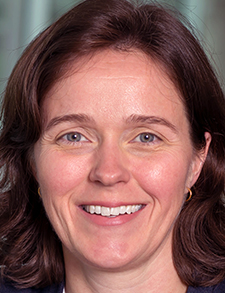
Dr. Thompson
Rachel Thompson, MD, MPH, SFHM, immediate past president of SHM and chief medical officer at Snoqualmie Valley Hospital in Snoqualmie, Wash., said that she used to have an “everything will work out” mindset regarding immigration issues. A wake-up call came when she tried to recruit physicians to the hospital medicine department for a former employer and was told, “We don’t do visas,” so she had to reject someone with a stellar resume. That physician went on to be a great addition to another university that did welcome physicians on visas.
Since then, she said she has been proud to be a part of SHM as the organization has promoted a diverse workforce that attempts to ease the hurdles immigrant medical graduates face. She pointed to SHM’s diversity and inclusion statement that says, “Diversity is a strength.”
“This is our workforce,” she said. “They’re here serving our communities, our people, and we shouldn’t be thinking about who is from where.”
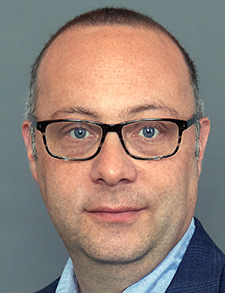
Mr. Boswell
Josh Boswell, JD, chief legal officer for SHM, said the focus of the U.S. health care system and the U.S. government should be on qualifications.
“Why? Because we need them here.”
SHM is working for legislation that would remove the per-country cap and make other changes to ease the application process and protect children from aging out of dependent status at age 21. Dr. Thompson said that while the legislation is supported in concept by both Democrats and Republicans, Democrats want more widespread reform, not piecemeal, and Republicans resist any reform until issues at the border are resolved.
“A lot of the holdup is really around this idea of upending the system,” Mr. Boswell said, “That’s where a lot of the pushback from other organizations comes from. You just keep at it.”
Tom Collins is a medical writer in South Florida.
References
- HIS Markit Ltd. The Complexities of Physician Supply and Demand: Projections From 2019-2034. Association of American Medical Colleges. https://www.aamc.org/media/54681/download?attachment
- Weiner S. 1 in 5 U.S. physicians was born and educated abroad. Who are they and what do they contribute? Association of American Medical Colleges. 2023. https://www.aamc.org/news/1-5-us-physicians-was-born-and-educated-abroad-who-are-they-and-what-do-they-contribute#:~:text=Consider%20some%20statistics%3A%20In%202021%2C%20approximately%201%20in,they%20totaled%20more%20than%20203%2C500%20physicians%20in%202021.
- Immigrant Healthcare Workers Are Critical in the Fight Against COVID-19. New American Economy. April 9, 2020. https://research.newamericaneconomy.org/report/covid-19-immigrant-healthcare-workers/
Additional reading from the Journal of Hospital Medicine: Immigrant Physicians Fill a Critical Need in COVID-19 Response